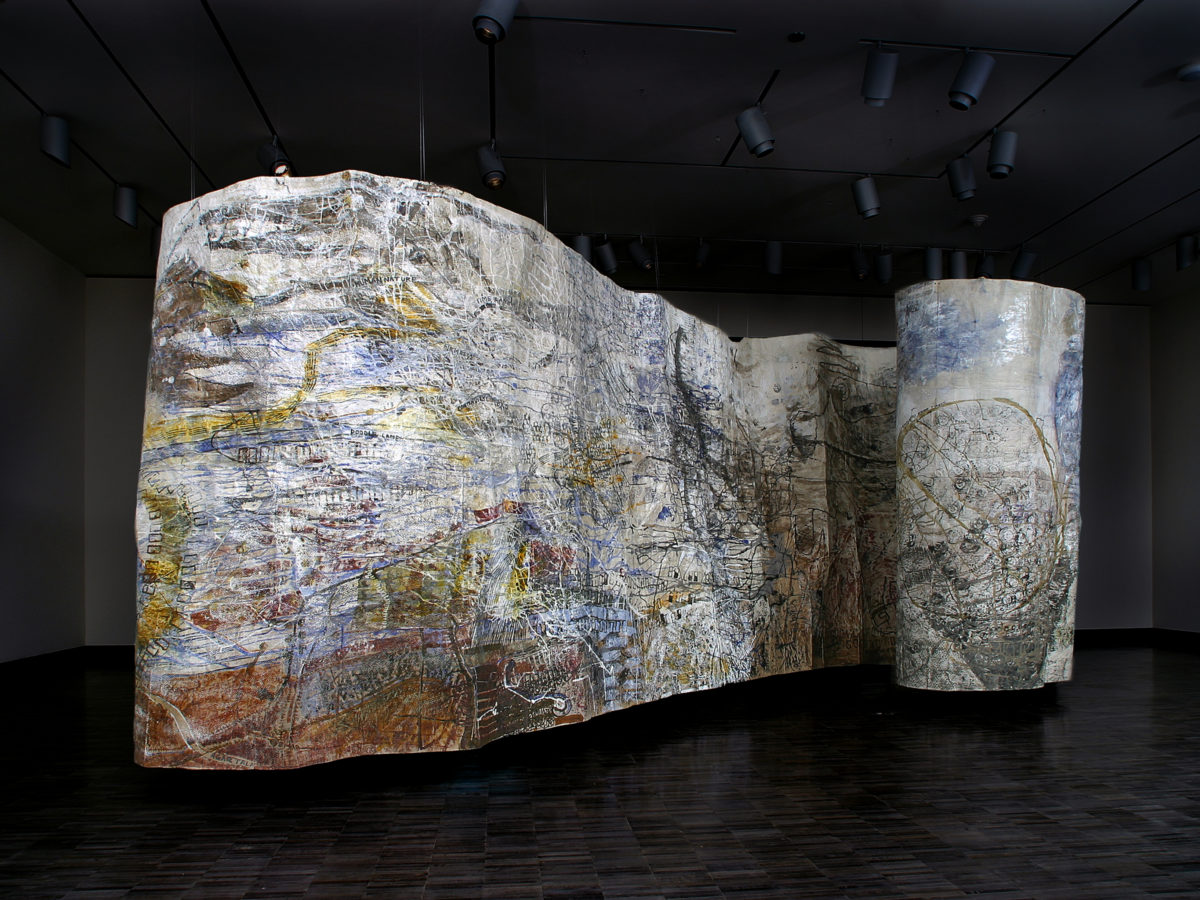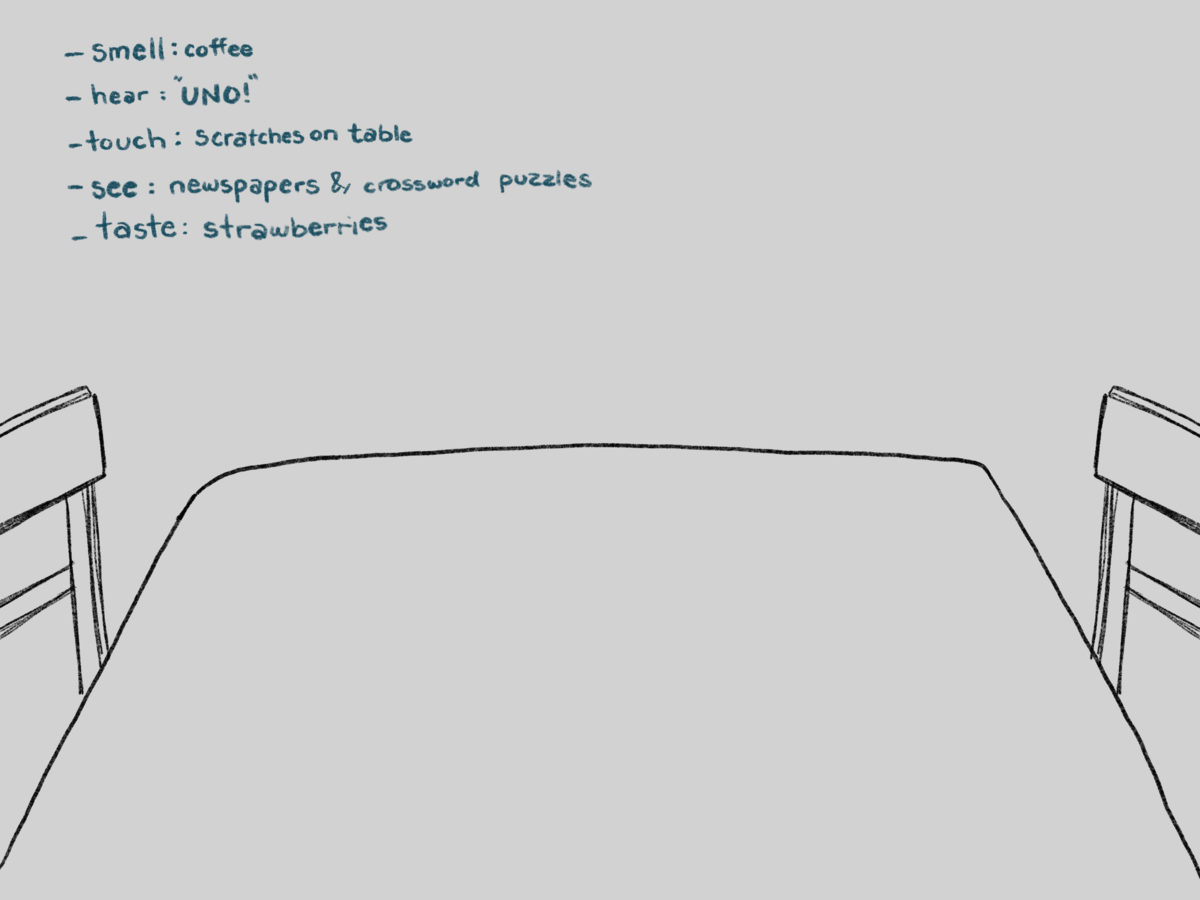Activity
Mapping Your Special Space
Personal Space (2001), a layered, dreamlike painting by Kolkata-based artist Jayashree Chakravarty, is an imaginary map built up from painted strips of paper. In this activity, create your own map based on your special place.

Click through the gallery to see step-by-step instructions.
Personal Space (2001), a layered, dreamlike painting by Kolkata-based artist Jayashree Chakravarty (b. 1956), is an imaginary map built up from painted strips of paper. At eight feet tall and more than 30 feet wide, the colossal scroll furls and unfurls, establishing an architectural presence in the gallery. As you circle the work in an attempt to chart a course through the chaos of streets, signs, and natural landmarks, you experience the disorientation the artist felt as the rapidly expanding city swallowed the countryside of her youth.
Attempting to navigate the landscape, viewers encounter streets that flow like rivers through sets of houses and mountains, at times circling into oblivion. Using street signs with names such as “Self Esteem,” “Category Lane,” and “Continuity Road” — with the mapped streets leading in ambiguous directions — Chakravarty charts a course of alienation and confusion typical of modern existence.
Watch this video of Chakravarty discussing the inspirations for Personal Space. Learn more about Chakravarty’s life and art here. Read reflections by a cross-section of Kolkatans on their environmental concerns.
Question to Consider: Why do you think Chakravarty titled this artwork Personal Space?
Materials
Pencil
Paper
Download the teacher packet from sidebar above for complete instructions.
Procedure
1. Choose a space/place/spot that means a lot to you. It can be a special corner chair, a favorite building, a street you visit often, or an inspiring outdoor space. Draw/ sketch that place on a piece of paper.
In our example, the artist chose his family’s kitchen table.
2. Use your senses: Jot down phrases that convey the
- sights
- smells
- sounds
- tastes
- textures
you associate with this space.
3. Add illustrations for the sensory details you listed earlier. If the space is a room or larger, draw arrows to show how you move through this space.
4. How does this space make you feel? What “landmarks” that draw out strong memories or emotions might you name? Add emojis to help convey your feelings about these landmarks.
5. Reflect:
- What do your memories and feelings about this space reveal about you?
- How has the space changed over time?
- If you could change something about that space, what would it be, and why? How might you go about making that change?








